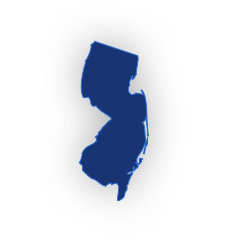
"Without Data, you’re just another person with an opinion."
This statement made by the late Sir Ken Robinson, one of the foremost thinkers in the field of education, speaks to the need for more hard data related to the overall status and condition of arts education (Dance, Media Arts, Music, Theatre and Visual Arts) in our schools. Adopting a systemic, data-driven approach to understanding the current condition of arts education in the United States serves be the catalyst to increase student participation in arts education in all schools across the country. It also moves the conversation about the importance of arts education from opinion to factual evidence, so that arts educators no longer feel the need to defend their programs.
For the past 15 years, members of our team have been working with arts education data in partnership with state departments of education, state arts councils and significant foundation partners to demonstrate the actual impact of publicly releasing arts education data for an entire state (on a school by school basis) and increase access and participation. Known as the Arts Education Data Project, this initiative is accomplished by taking data gathered by each state department of education, standardizing the data and then transforming it into a publicly available interactive dashboard, updated annually to reflect the true status of arts education in every school, at every grade level for every student.
Before we undertook this project, no one really knew the true status and condition of arts education in the more than 100,000 schools serving more than 50 million students nationwide.
Important questions like these went unanswered:
- Which schools provide access to arts education and in what disciplines (Dance, Music, Theatre, Visual Arts, Media Arts)?
- How many students are actually participating?
- How many arts teachers are providing instruction?
- Who has access to arts instruction?
- Most importantly, who does not?
- How have the answers to these questions changed over time?
The Arts Education Data Project has been designed to answer these questions and more for parents, teachers, policymakers and advocates. The ultimate goal of the project is for the data to be the catalyst to drive changes in arts education that will lead to increased participation for students across the nation.
Our comprehensive and deep approach to the collection and distribution of arts education data has already had a significant impact on arts education in key states. For example:

In New Jersey (the first state to use this approach) participation in the arts has gone from 65% in 2006 to 80% in 2017. That represents 200,000 more students participating in arts education each year! This translates to an additional 1 million students participating in arts education programs over the past decade.

In California (released in 2016), the impact on how they are using data to expand access and participation has been extraordinary. The project enabled leaders to shape statewide policy, by capturing a more complete picture of the inequitable distribution of resources for arts education throughout the state and has served as the basis for state legislative proposals and presentations currently being made before local school boards throughout the state. Participation has started to rise while the number of students without access has declined. The data even helped with the passage of legislation allocating $40 million to school-based arts programs.
The initial phase of the Arts Education Data Project has been made possible by the generous financial support of the William and Flora Hewlett Foundation, Geraldine R. Dodge Foundation, Country Music Association Foundation, NAMM Foundation, Ohio Arts Council, The New Jersey State Council on the Arts, Tennessee Arts Commission and Little Kids Rock.
As a result, we now have 31 states – representing 65% of the total student population in the United States – participating in the Arts Education Data Project with at least eight more targeted for development for 2023 and are now looking for new partners who will help scale up the work to cover the entire nation to support national reporting.
Given all this initial success, what more needs to be accomplished?
With significant new grants from The CMA Foundation, the philanthropic arm of the Country Music Association, and The Music Man Foundation the project is expanding to other states across the country encouraging them to engage in data-driven strategies to expand arts education for the rest of the nation.

In doing so, we expect to realize critical goals that will elevate the conversation to the national stage:

Gather important data for other states not yet studied in the Arts Education Data Project.


Compile comprehensive data across all states, enabling comparative analyses of arts education across the country that will aid in the implementation of national level strategies and tactics.


Increase student participation in arts education across the nation.
By gathering and reporting on the status and condition of arts education the project will usher in a new renaissance in our schools by increasing access to, and participation in, arts education across the United States.
